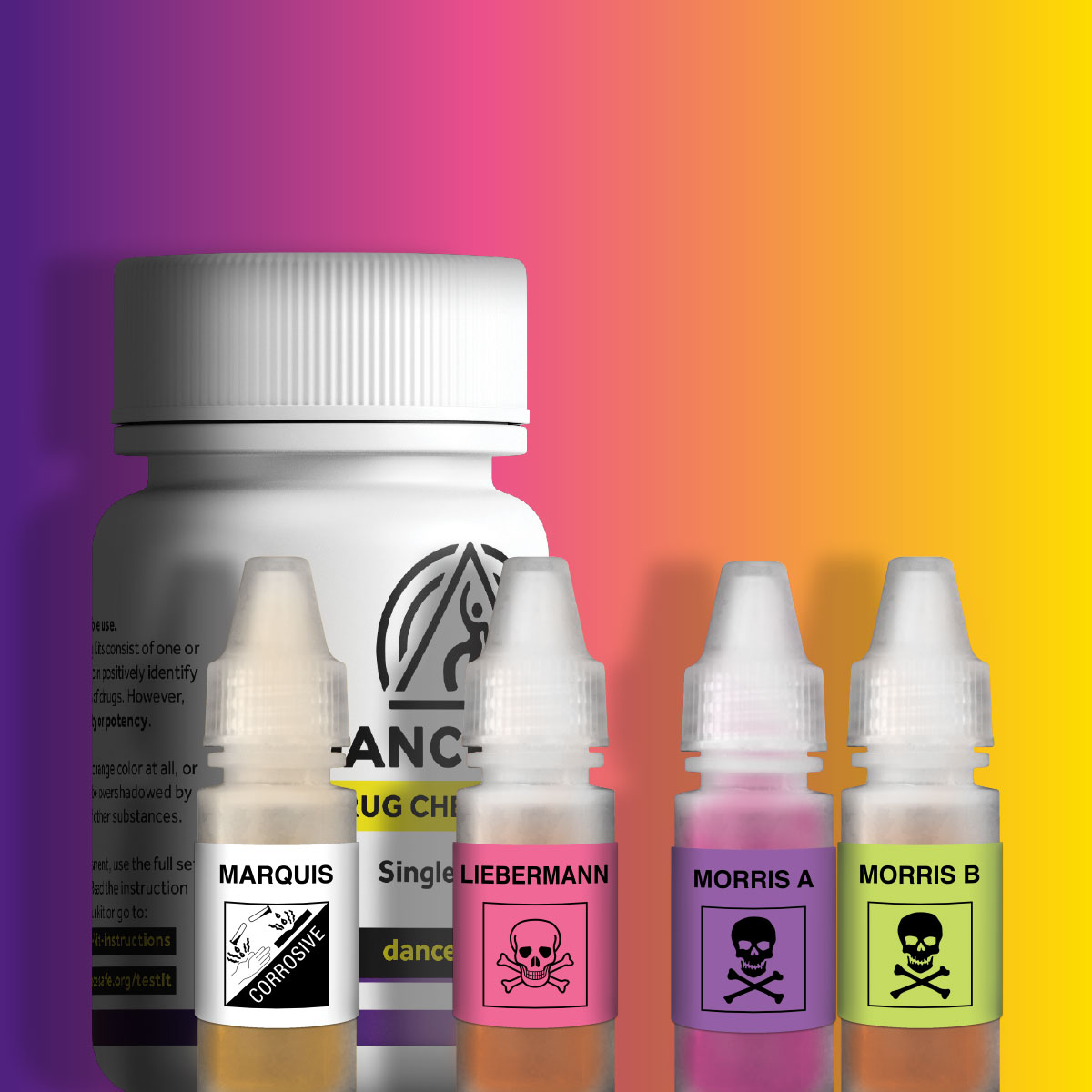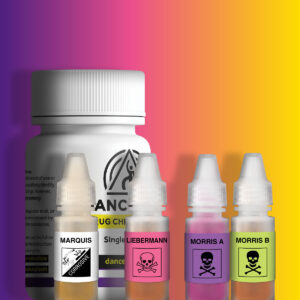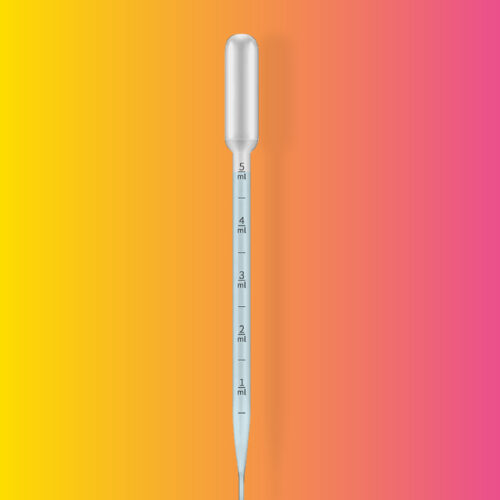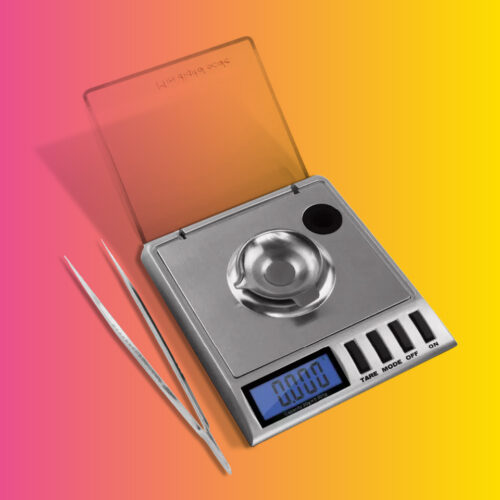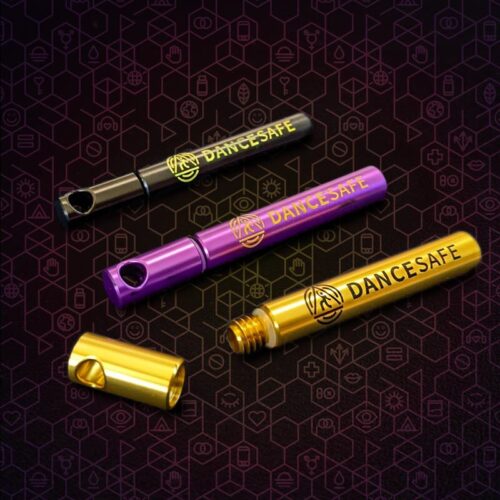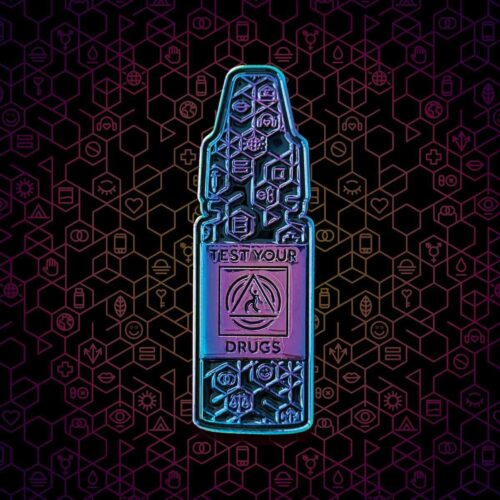Cocaine Testing Kit
$49.99
DanceSafe’s cocaine kit consists of the Morris, Marquis, and Liebermann reagents. This is the only kit we sell that is also capable of detecting specific cuts (levamisole and lidocaine).
Each kit performs 50-75 tests. Includes one free fentanyl test strip and one free amphetamine test strip.
Shipped discretely. Overnight shipping available. More info
- Description
- Additional information
Description
Step 1: Morris
Morris reagent consists of two liquids, bottle A and bottle B. When A and B are combined onto a small drug sample and stirred, Morris produces a unique blue color in the presence of cocaine, like the Jolly Rancher hard candy.
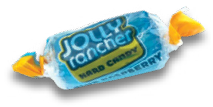
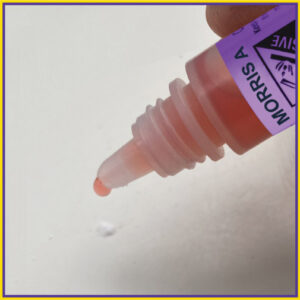
Step 1:
On a white ceramic plate, put a drop of the pink liquid (bottle A) onto a small amount of your sample. We recommend using at least 5-10 mg of material (more than other reagents require) to get an accurate reading.
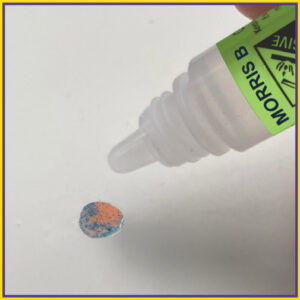
Step 2:
Put a drop of the clear liquid (bottle B) on the same sample. Your sample should now have a drop of Morris A and a drop of Morris B on it. Blue speckles may appear, but your test isn’t done yet.
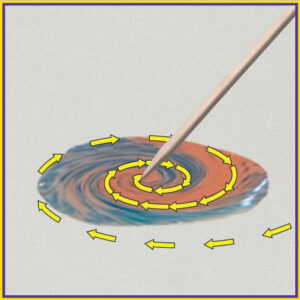
Step 3:
Stir the mixture with a toothpick or the sharp point of a knife for a full 30 seconds.
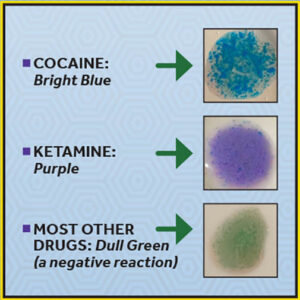
Step 4:
After stirring, compare the resulting color with the images below.
Step 2: Marquis
Previously, Marquis reagent would not react with cocaine. In recent years, however, the following three reactions have become “expected results” for cocaine:
- No reaction
- Light pink
- Light peach
Any reaction other than the three listed above should be considered “unexpected” for cocaine.
If your sample turns a darker orange, you may want to use an amphetamine test strip to see if any unwanted amphetamines are present.
We’re not certain why cocaine has started reacting with Marquis. It might be because of impurities left over during the manufacturing process, a new precursor (main ingredient) used to make cocaine, a bulking agent, or something else.reaction, you can only make educated guesses as to why.
Step 3: Liebermann
Liebermann is useful for testing for the presence of levamisole and/or lidocaine. It turns yellow in the presence of cocaine, but will turn a rusty red color if the cocaine is cut with either levamisole or lidocaine. Unfortunately, at this time there is no way to tell which one it is. It could be one or both.
Note: If Marquis turns orange, Liebermann generally will too. Make sure to use an amphetamine test strip if you suspect that the sample might contain amphetamines.
Always use Morris first. Any reaction other than this bright blue color is “unexpected.”
- If there is no blue tint at all, your sample definitely does not contain cocaine.
- If there is a blue tint, but the color isn’t bright like the pictured reaction, you can only make educated guesses as to why.

Cocaine is often “cut” with additional substances. This can include:
- “Bulking,” mixing in drugs that won’t get you high (like supplements, drywall, or baking soda) to increase profits, or
- “Adulterating,” selling someone a psychoactive drug they didn’t ask for.
Two of the most common cocaine cuts are lidocaine (which numbs your skin) and levamisole (which is used to de-worm cattle). Both of these substances make the appearance, taste, and smell of cocaine seem authentic. Levamisole can be stimulating, and lidocaine numbs your tongue and gums.
People who ingest levamisole too frequently for a long time can eventually develop immune issues. Some long-term cocaine users have died from otherwise treatable illnesses, as a result of levamisole inhibiting their immune systems.
Our cocaine kit can give you information about whether your cocaine might be cut with levamisole or lidocaine. Beware of “purity tests” – we have yet to come across any that actually work as intended.
Of note: Many people believe that they can tell which drug they have by looking at, tasting, touching, or smelling it, but there are over 25,000 drugs on the market. Whether you have pressed pills, crystals, or powder, there is no way to tell what drug you might have without testing it first, and only a lab can actually confirm what’s in your drugs.
Read our “reagent drug checking instructions” page FIRST to learn how to test correctly. Our full instruction pamphlet is also included as a physical copy with your order.
For many years, most of the harm reduction and drug checking community (including us) believed that an orange result with Marquis always indicated the presence of amphetamines. This matched all published data in the scientific literature. Starting around 2019, however, we began noticing cocaine samples sent in to DrugsData.org that turned orange with Marquis but did not contain amphetamines.
After consulting with numerous laboratories and scientists, a consensus is emerging that a non-psychoactive substance (does not get you high) is likely responsible for this orange color in the absence of amphetamines. This may be one or more inert compounds left over from the cocaine extraction process.
Copyright © 2019, 2020, 2021, 2022 DanceSafe, Inc.
Additional information
| Weight | 0.28 lbs |
|---|---|
| Dimensions | 3.75 × 5.5 × 1.75 in |


